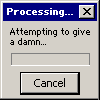FLIGHT CREW BULLETINS
CHARACTERISTIC AND PROTECTION SPEEDS
A318/A319/A320/A321 FLEET FCB-FCB17 P 1/6
FCOM A → 08 NOV 12
CHARACTERISTIC AND PROTECTION SPEEDS
INTRODUCTION
The different speeds displayed to the crew on the main cockpit interfaces: PFD, MCDU, ND are computed by the FACs, the FMGCs and the ADIRS.
PFD MCDU PERF PAGE FAC COMPUTATION FMGC COMPUTATION
Computed on current aircraft status and configuration. Computed for take off, go around and landing.
VLS
F
S
"O" Green Dot
Vαprot
Vαmax
Vsw (stall warning speed)
VLS of the selected landing configuration.
F
S
"O" Green Dot
Each FAC computes its own speeds which are displayed on the relevant PFD:
FAC 1 on side 1,
FAC 2 on side 2.
Each FMGC computes its own speeds displayed on the relevant MCDU:
FMGC 1 on side 1,
FMGC 2 on side 2.
The algorithms used to compute the characteristic speeds are the same in both FAC and FMGC
but as the inputs are different, the resulting values may differ.
CHARACTERISTICS SPEEDS COMPUTED BY THE FAC
The FAC computes its characteristic speeds with 2 main inputs from ADIRS (Angle of Attack (α) and calibrated airspeed (Vc)). It also uses THS position, SFCC data and FADEC data.
From these inputs, the FAC computes a stall speed Vs which is used to determine the aircraft
weight.
The following sketch gives the basic architecture for FAC speed computation.




